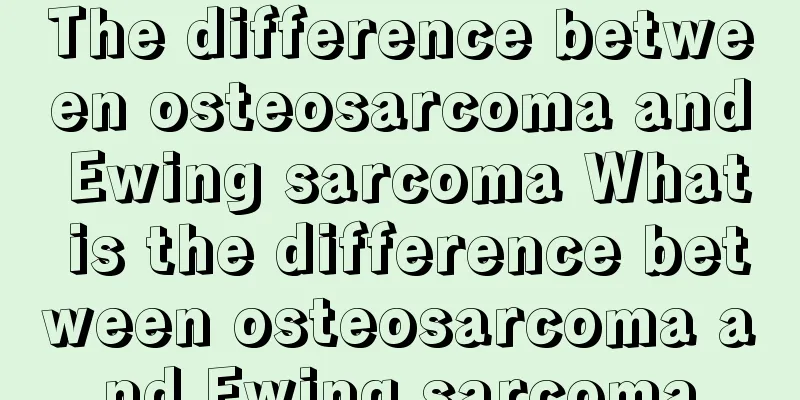How to diagnose recurrence of nasopharyngeal carcinoma after radiotherapy

|
How to diagnose the recurrence of nasopharyngeal carcinoma after chemotherapy? The basis for the recurrence of nasopharyngeal carcinoma is the appearance of new masses and lesions on the nasopharyngeal wall, the blurring or occupation of the parapharyngeal and retropharyngeal spaces by tumors, the enlargement of adjacent lymph nodes, the new destruction of skull base bones, the enlargement and deformation of the cavernous sinus, etc. 1. Common sites of nasopharyngeal carcinoma recurrence and CT examination Among the recurrent cases, the largest proportion was recurrence in the parapharyngeal and carotid sheath areas, and the recurrence lesions mainly invaded the deep structures of the pharyngeal wall; followed by recurrence in the cavernous sinus area of the skull base (accounting for 35%). The recurrence lesions invaded the skull base bone and cavernous sinus upward. The possible reasons are: (1) Nasopharyngeal carcinomas that tend to invade the deep structures of the pharyngeal wall are mostly euploid or diploid tumors with a high degree of malignancy and a high recurrence rate; (2) During radiotherapy, the original carotid sheath area and skull base lesions must be treated to avoid irradiation of the spinal cord and brain tissue. The radiation dose and radiation field design are limited, and the effect of radiotherapy is often affected. Therefore, these two areas are more prone to recurrence than the primary lesion area, and special attention should be paid to these areas during CT reexamination. The carotid sheath area is a space surrounding the internal carotid artery and vein, which contains the posterior 4 pairs of cranial nerves, cervical sympathetic trunks, and deep cervical lymph nodes. When the tumor invades, the CT appearance of this area is full, the structure is blurred, or it is occupied by the tumor. For patients with original skull base invasion or suspected recurrence in the cavernous sinus area of the skull base, a thin-layer transverse section of the skull base plus coronal enhancement scan should be used to facilitate early detection of recurrent lesions. 2. Characteristics of NPC recurrence The evidence of nasopharyngeal carcinoma recurrence is the appearance of new lesions on the nasopharyngeal wall, blurring or tumor occupation of the parapharyngeal and retropharyngeal spaces, enlargement of adjacent lymph nodes, new destruction of skull base bones, and enlargement and deformation of the cavernous sinus. Experts believe that CT follow-up and control analysis after radiotherapy for nasopharyngeal carcinoma is very important, and enhanced CT scanning is also of high value in the differential diagnosis of local recurrence and fibrosis after radiotherapy for nasopharyngeal carcinoma. Due to the different growth sites of nasopharyngeal carcinoma tumors, the changes in fibrosis after radiotherapy vary, and control analysis can find new mild abnormal changes, which is conducive to the early diagnosis of recurrence. 3. Differences between recurrence and fibrosis after radiotherapy for nasopharyngeal carcinoma After radiotherapy for nasopharyngeal carcinoma, some tumor tissues undergo fibrosis. There is currently no satisfactory differential diagnosis method for tumor recurrence and fibrosis using CT. However, a series of follow-up CT scans after radiotherapy can be used to compare and analyze whether the tumor has recurred. Dynamic enhanced scanning of spiral CT of the nasopharynx can also provide an important basis for differential diagnosis. The time and enhancement curve of recurrent tumor tissue is a rapid rise and slow fall type or a rapid rise and platform type, while the time and enhancement curve of tumor tissue fibrosis is a slow continuous enhancement or a rapid rise and slow rise type. Some lesions may also have no obvious enhancement changes. |
<<: The probability of recurrence of nasopharyngeal carcinoma after one year of radiotherapy
>>: What causes nasopharyngeal cancer
Recommend
Diagnostic basis for bronchogenic lung cancer
What are the key points for diagnosing primary br...
Beware of the four major causes of liver damage!
Normal liver function maintains human health. Whe...
Will patients with periarthritis of the shoulder experience numbness in their hands?
Periarthritis of the shoulder can cause numbness ...
When is the best time to drink honey water?
Honey is a very common food. It is divided into h...
Is the recurrence rate of early bladder cancer high?
Bladder cancer is a relatively common malignant t...
Is icteric hepatitis generally easy to treat?
In modern society, people's living standards ...
How to clean an electric water heater
Electric water heaters are the most commonly used...
What to do if you feel anxious, chest tightness and shortness of breath? Traditional Chinese medicine is very effective
Some friends sometimes feel chest tightness and s...
Classification of skin cancer and its symptoms
Skin problems are very common, but we don’t know ...
How to treat hypospadias diverticulum?
Hypourethral fissure diverticulum is a urinary sy...
What are the benefits of drinking Cnidium monnieri soaked in water
Drinking Cnidium monnieri soaked in water is good...
What are the factors that easily lead to cervical cancer? Can the treatment of cervical cancer be delayed?
According to statistics, more than 95% of women s...
What causes adnexal teratoma
Treatment of adnexal teratoma requires surgical r...
There is nothing on my body but it itches. What's going on?
Many people will experience some abnormal situati...
What are the ways to prevent nasopharyngeal cancer?
Nasopharyngeal cancer is mainly caused by mental ...









